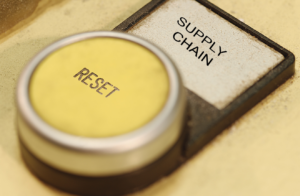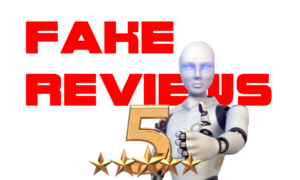The marketing funnel was a reliable model for over a century. Kirk Williams (@PPCKirk), owner of ZATO, explains, “The marketing funnel, for those unaware, is a concept created in 1898 to describe the ‘theoretical customer journey’ and assist in targeting the right message to the right person at the right time. … The funnel is typically seen as four categories that move from a broadening group of people (cold leads) to a smaller, more targeted and closer to purchase group of people (hot leads).”[1] Liz Willits (@lizwillits), a Content Strategy Specialist with AWeber, believes the marketing funnel has five, rather than four, stages. She explains, “The marketing funnel is a tool that helps you visualize the buyer journey, or the path a prospect takes as they become familiar with your company, from introduction to conversion (and hopefully beyond). Your marketing funnel should include the following 5 stages: awareness, consideration, conversion, loyalty, and advocacy.”[2] Those stages still sound reasonable; so, you might be wondering why Australian business consultant Mark Hocknell (@mark_hocknell) insists, “The Funnel that we so often use to describe leads-to-converts (social media, marketing and sales), has stopped being useful at all, in fact I believe it actually hinders engagement with our future customers.”
From Funnels to Flywheels
Hocknell emphatically insists, “Yes that’s right — The Funnel that is used by some of the best marketing organizations on the planet — has long passed its use-by date.”[3] He’s joined by Mike Lieberman (@Mike2Marketing), CEO and Chief Revenue Scientist at Square 2, who bluntly declares, “The sales funnel is dead.”[4] On the other hand, Williams insists, “The marketing funnel isn’t dead.” Such disagreements underscore the fact that the digital path to purchase is hard to model because consumers can jump on or off the path at given point. Their purchasing journey is messy. Lieberman argues, “In the last decade, the Internet and social media have rewritten almost everything you knew about sales and marketing. … So why are you still using the outdated concept of a sales funnel? … It’s time for a paradigm shift.”
According to Lieberman, “The new buyer’s journey is a bit chaotic. It’s also more accurately envisioned as a cycle, rather than the linear process of the funnel. In the old model, customers entered at the top of the funnel and exited at the bottom. Once they’d made a purchase, you were no longer concerned with them. This isn’t true in an age when an upset customer can call you out on Twitter as easily as a pleased customer can give you a shout-out. Once they’ve made a purchase, customers are with you, for better or worse. … Given this chaotic, cyclical nature, the modern buyer’s journey is best envisioned by a cyclone.” Many experts trying to model the digital path to purchase use a circular model similar to Lieberman’s cyclone (i.e., a continuous circle of marketing, sales, and service). Julia McCoy (@JuliaEMcCoy), CEO of Express Writers, calls her model “lifecycle marketing”.[5] She explains, “Modern buyers’ journeys are not even close to [being] linear, not to mention they hate impersonal marketing and cold/aggressive sales tactics. … Sales funnels don’t accurately model the modern buyer’s journey. Lifecycle marketing does.”
Another popular circular model is called the flywheel. Dan Tyre (@dantyre), sales director at HubSpot, explains, “Armed with extensive online information, a modern buyer requires different skills from a salesperson and frequently exhibits different behavior than buyers of the past. A modern buyer may get very excited about a purchase and spend a lot of time in the research phase and then abruptly stop, ending the sales process sometimes without any reason at all. Often, modern buyers want to reduce the friction of buying and using a product to make it easy for them to achieve the value. These behaviors are why we suggest that you leverage a flywheel instead of a sales funnel.”[6] Digital marketing strategist Griffin LaFleur (@ghlafleur) also favors the flywheel model. He writes, “The flywheel approach puts the customer at the center of a company’s marketing activities.”[7]
Steve Carrod, Managing Director at digital experience enablement business DMPG, agrees the customer should be at the center of the marketing model, but he prefers a sandwich to a circle. He explains, “If business success now relies on brands generating a unified and tailored experience, a ‘customer sandwich model’ could be a way to feed this. … A customer sandwich model is based on the understanding that companies should both begin and end with consumers’ needs, then sandwich all other elements in between.”[8] The one thing all these new models have in common is the understanding that organizations must provide a holistic experience for the consumer. In other words, organizational teams can no longer work in silos when dealing with customers. Unfortunately, Carrod believes, “At present, the majority of companies have very siloed teams that each own a unique workstream and a specific viewpoint on their customers.”
James Hankins (@JCPHankins), a consulting strategist and founder of Vizer Consulting, agrees that organizational teams must work together and cover all touchpoints. He writes, “The first thing we need is something to help visualize the complexity of the path to purchase.”[9] His preferred model is a hexagon with lines connecting all consumer decision nodes or points of inflection. He explains, “Each point is connected to every other point. … This interlinked model allows all points to be connected to all potential decision nodes. The benefit being there are no pre-formulated pathways or directions. As each node is linked to every other node this theoretically represents a vast number of potential paths to purchase.”
Business journalist Linda Pophal insists the path to purchase is difficult (if not impossible) to model because some, and occasionally all, of the journey is not digital. She explains, “The digital sales environment has long lulled marketers into a false belief that they can accurately monitor the customer journey online. The truth, though, is that much of the customer journey still takes place offline and even the activities they might perform online seldom progress in a linear fashion. Instead, the journey is circuitous with elements that are not as obvious or easy to see.”[10] She calls the offline purchase journey the “dark funnel.” Milosz Krasinski (@MiloszKrasinski), managing director at Chilli Fruit, told Pophal, “The dark funnel basically speaks to the fact that marketers began to lose sight of what drives customers to websites and through their buying decisions. The dark funnel is made up of all the small but important things that have changed over the years and which come together to make a big difference.”
Concluding Thoughts
Because the digital path to purchase is difficult to model, organizations need to leverage cognitive technologies to capture as many insights about consumers as possible. Pophal explains, “The circuitous route that consumers take in their decision making is increasingly subject to change as new technologies and new business models emerge. Marketers must remain nimble and be constantly on top of emerging trends to remain relevant and top of mind.” Cognitive solutions, like the Enterra Shopper Marketing and Consumer Insights Intelligence System™, can help bring together a wealth of data to provide insights about how consumers’ behaviors and preferences are changing. As Carrod notes, “To realize true customer centricity, businesses must keep in touch with consumer habits and preferences even as they emerge.” Even if the purchase journey can’t be modeled, Carrod concludes, “Placing consumers at the start and finish of a business is the best way to craft a customer experience that meets their needs. By ensuring consumer centricity across all departments, businesses can unify their efforts to successfully build valuable customer relationships, boost engagement, and sustain brand loyalty.”
Footnotes
[1] Kirk Williams, “The Marketing Funnel Isn’t Dead, We Just Understand It Better,” Search Engine Journal, 27 June 2019.
[2] Liz Willits, “Understanding the Marketing Funnel: 5 Strategies to Improve Your Email Marketing,” AWeber, 2016.
[3] Mark Hocknell, “The end of The Funnel,” Customer Think, 3 November 2016.
[4] Mike Lieberman, “The Sales Funnel Is Dead: What’s Next?” Square 2 Blog, 4 February 2019.
[5] Julia McCoy, “Forget the Funnel: Join the Buyer’s Journey With Lifecycle Marketing Instead,” MarketingProfs, 22 May 2019.
[6] Dan Tyre, “Sales Funnels: What They Are & What You Should Make Instead,” Hubspot Blog, 21 March 2020.
[7] Griffin LaFleur, “Sales funnel vs. flywheel: How sales and marketing has evolved,” TechTarget, 25 September 2020.
[8] Steve Carrod, “How the customer sandwich model can feed consumer centricity,” Consultancy.uk, 29 April 2021.
[9] James Hankins, “Forget funnels, here’s a new model for the path to purchase,” Marketing Week, 2 February 2021.
[10] Linda Pophal, “Shining a Light on the Dark Funnel,” CRM Magazine, 30 March 2021.
[11] Ibid.





